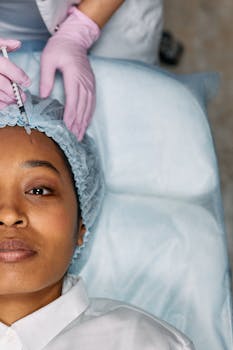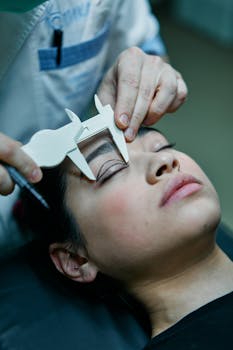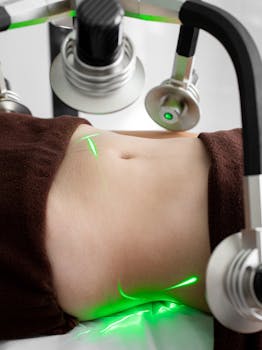Laser Resurfacing Black Skin requires careful consideration of skin tone, device choice, and aftercare to safely stimulate collagen and improve texture without causing hyperpigmentation. When performed correctly, these treatments can reduce acne scarring, fine lines, and uneven pigmentation while promoting a stronger, smoother dermal matrix. This guide walks through what to expect, how clinicians adapt protocols for darker phototypes, and practical aftercare steps to support collagen-boosting results.
Laser skin resurfacing for darker tones: how it differs
Treating darker skin is not the same as treating lighter tones. Melanin absorbs laser energy and raises the risk of post-inflammatory hyperpigmentation or hypopigmentation if settings are too aggressive. Providers experienced in skin of color will select wavelengths, pulse durations, and energy levels tailored to lower melanin absorption and stagger sessions to allow safe collagen remodeling. Choosing the best laser treatment for dark skin—often nonablative fractional lasers, certain picosecond devices, or low-fluence Nd:YAG protocols—minimizes epidermal injury while encouraging dermal collagen formation.
Types of lasers and their roles
Lasers fall broadly into ablative and nonablative categories. Ablative lasers remove the epidermis and are highly effective but carry greater risk for darker skin. Nonablative fractional resurfacing targets dermal tissue while leaving the surface largely intact, reducing downtime and pigmentary complications. For many patients seeking laser resurfacing black skin, nonablative fractional options or long-pulsed 1064 nm Nd:YAG treatments provide a safer balance of efficacy and safety.
Preparing for treatment
Prior to any procedure, a thorough consultation should assess Fitzpatrick skin type, history of keloids or pigmentary changes, recent tanning, and current skincare regimen. Pre-treatment protocols often include:
- Topical lightening agents (e.g., hydroquinone alternatives) for several weeks to stabilize pigment.
- Avoiding sun exposure and tanning beds to reduce baseline melanin activation.
- Discontinuing photosensitizing medications or skincare ingredients as directed by your provider.
Discuss expectations realistically—laser skin resurfacing black skin typically requires multiple sessions for progressive improvement in texture and tone.
What to expect during and after the procedure
During treatment you may feel warmth, snapping, or a stinging sensation depending on the device and topical anesthesia use. Sessions for darker skin are generally conservative: lower energy, fewer passes, and longer intervals between procedures. Immediately after, expect redness and mild swelling that may persist for several days. Because of the pigment risk, clinicians will monitor healing closely and may extend intervals between treatments.
Aftercare to maximize collagen remodeling
Post-procedure care is crucial to protect regenerating skin and support collagen production. Key aftercare steps include gentle cleansing, broad-spectrum sun protection, and using prescribed topical agents to prevent pigmentation changes. Avoid picking scabs or aggressively exfoliating during the healing window. Hydrating occlusives and barrier-supportive products help maintain optimal repair conditions. For additional guidance on sun protection, see the CDC’s sun safety guidance for skin cancer prevention and UV protection.
Many patients inquire about combining procedures. If you’re considering concurrent cosmetic options—such as volume treatments or body contouring—coordinate timelines with your clinician. For example, learn more about recovery and expectations for major aesthetic procedures like fat transfer breast augmentation cost and what to expect before planning simultaneous interventions.
Risks, realistic outcomes, and follow-up
Risks include transient erythema, flaking, pigmentary shifts, and very rarely scarring. Follow-up visits are important to assess pigment stability and to institute interventions (topical lighteners, chemical peels, or laser touch-ups) if needed. Realistic outcomes typically involve gradual improvement over several months as collagen remodels; immediate smoothing may be visible, but full benefits accrue as the dermis rebuilds.
- Choose a provider experienced with skin of color and ask about their complication rates.
- Expect staged treatments rather than a single aggressive session to protect pigment.
- Strict sun protection and adherence to postop instructions dramatically reduce pigment complications.
Short FAQ
Q: Is laser resurfacing safe for all darker skin types?
A: Many darker skin tones can be treated safely when providers choose appropriate devices and conservative settings. Nonablative fractional lasers and long-pulsed Nd:YAG are commonly preferred to lower pigment risks.
Q: How long before I see collagen-related improvements?
A: Collagen remodeling is gradual—noticeable improvements often appear over 3–6 months after a treatment series, with continued refinement up to a year.
Q: Can I prevent post-treatment hyperpigmentation?
A: Preventive steps include pre-treatment pigment stabilization, sun avoidance, using broad-spectrum sunscreen daily, and following your clinician’s topical regimen. Early follow-up allows prompt management if pigment changes appear.






